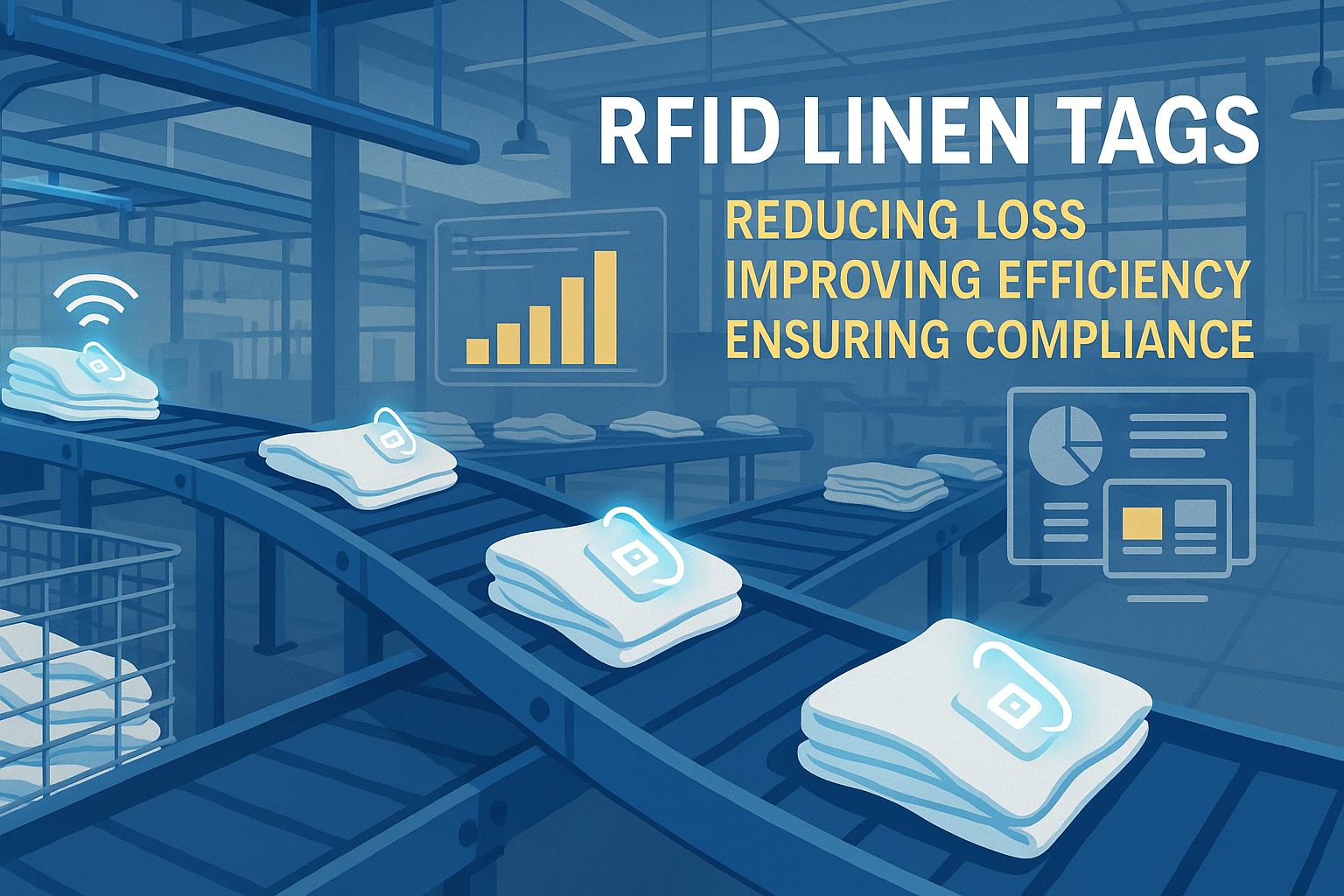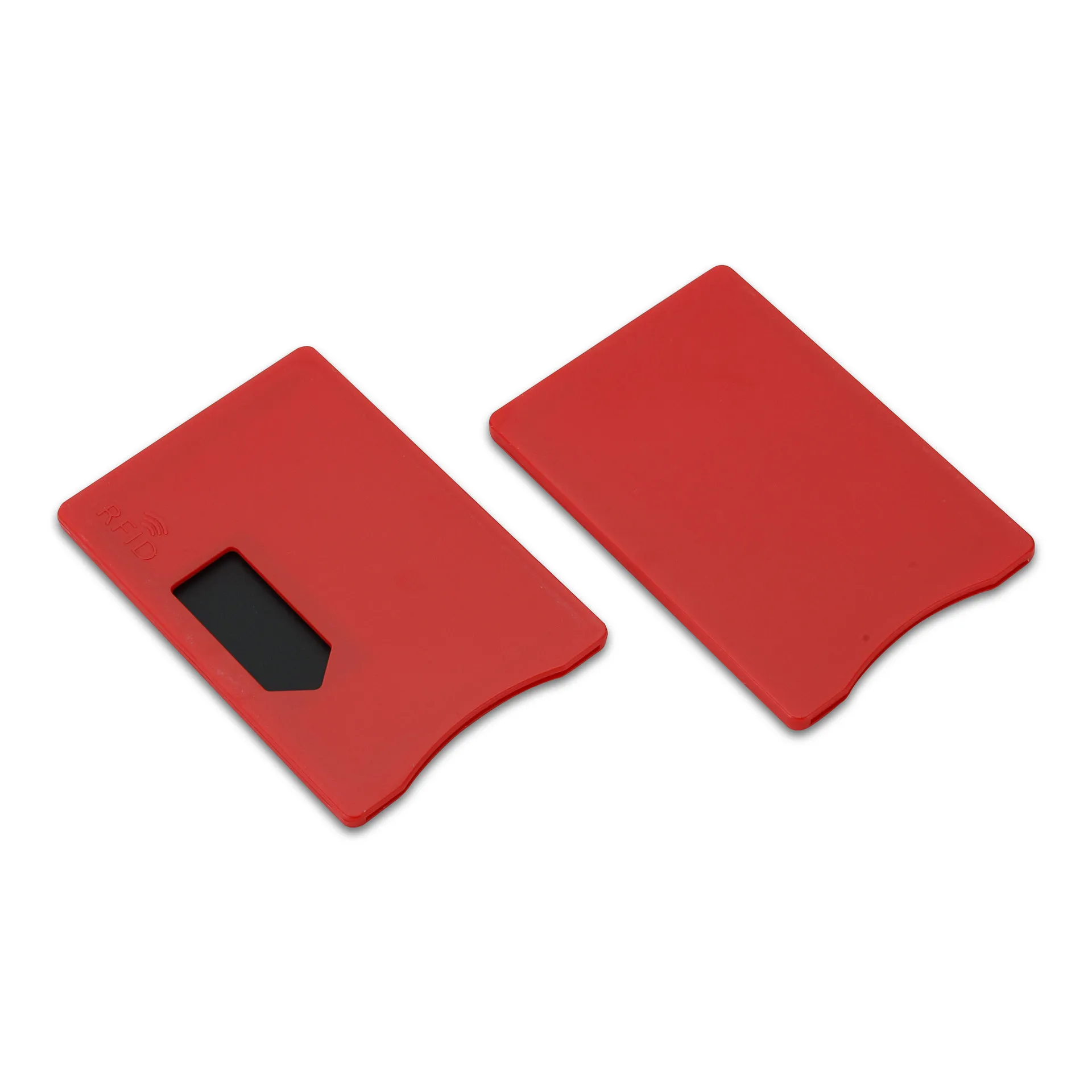
Hogyan tárolják az RFID-címkék az adatokat?
Tartalomjegyzék
Bevezetés
Ennek a folyamatnak a megértése nem csupán elméleti kérdés. Az intelligens ellátási láncokat tervező mérnökök, az RFID-integrált alkalmazásokat fejlesztő programozók és a nagyméretű eszközkövetést felügyelő IT-vezetők számára az RFID-memória, az adat kódolás és a biztonsági protokollok alapvető mechanizmusai kritikus fontosságúak a teljesítmény, az interoperabilitás és az adatok integritása szempontjából.

Mi az RFID és hogyan működik?
Mi az RFID?
Az RFID (rádiófrekvenciás azonosítás) egy vezeték nélküli technológia, amely elektromágneses mezők segítségével automatikusan azonosítja és nyomon követi az objektumokat. A vonalkódokkal ellentétben az RFID nem igényel közvetlen látóvonalat, és több adatot tud közvetlenül a címkén tárolni.
Az RFID-rendszer főbb összetevői
- RFID címke (Transzponder): Címkébe vagy tárgyba beágyazott chip és antenna, amely adatokat tárol.
- RFID olvasó (Kérdező): Rádiójelet küld a címke aktiválásához és az adatok fogadásához.
- Közbenső szoftver/rendszerszoftver: Feldolgozza, tárolja és továbbítja az adatokat adatbázisokba vagy alkalmazásokba.
Hogyan működik az adatátvitel?
Amikor az RFID-olvasó rádiófrekvenciás jelet bocsát ki, a címke antennája azt fogja, és táplálja a chipet (ha passzív). A chip ezután modulálja és visszaküldi a tárolt adatokat az olvasónak. Ez a kommunikáció frekvenciától függően változik:
- LF (alacsony frekvencia): Rövid hatótávolság, állatok nyomon követésére alkalmas.
- HF (magas frekvencia): Gyakori az NFC és az intelligens kártyákban.
- UHF (ultra magas frekvencia): nagyobb hatótávolság, gyorsabb olvasási sebesség – ideális logisztikai alkalmazásokhoz.
Mérnöki tipp: A passzív UHF-címkéket leggyakrabban az ipari ellátási láncokban használják, mert olcsók és akár több méter távolságra is képesek adatokat továbbítani.
Bevezető útmutató az RFID-címkék programozásához
Az RFID-címkék programozásával hatékony funkciók érhetők el – a termékadatok testreszabásától a biztonságos hozzáférés-vezérlésig. Számos eszköz és megközelítés áll rendelkezésre, de a konkrét módszer a címke típusától, frekvenciájától és alkalmazásától függ.
Jelenleg ellenőrzött kódpéldákon és gyakorlati útmutatókon dolgozunk az RFID-címkék biztonságos és hatékony programozásához. Ez a szakasz hamarosan a következőket fogja tartalmazni:
- Gyakorlati útmutatók az Arduino és az RFID modulok használatához.
- Adatok kódolása a TagWriter (Android) segítségével NFC-kompatibilis címkék.
- RFID SDK-k és asztali írók használata vállalati alkalmazásokhoz.
- Tippek a megfelelő memóriaformátum (ASCII, HEX, EPC) kiválasztásához.
Most szeretne elkezdeni? Addig is javasoljuk, hogy tekintse meg az alábbi forrásokat:
- NXP TagWriter alkalmazás– NFC kódolás Android számára
- MFRC522 Arduino könyvtár a GitHubon– Nyílt forráskódú RFID-olvasó könyvtár
- [Hardvergyártója SDK-ja vagy fejlesztői eszközei] konkrét olvasómodellekhez
Segítségre van szüksége az RFID-címkékre történő adatíráshoz vagy a kompatibilis eszközök kiválasztásához? Vegye fel a kapcsolatot műszaki csapatunkkal személyre szabott támogatásért.
Hogyan tárolják az RFID-címkék az adatokat belsőleg?
Lényegében az RFID-címke egy apró tárolóeszköz, amely speciális memóriabankokkal rendelkezik. A belső memória felépítésének megértése elengedhetetlenül fontos annak tervezésekor, hogy milyen típusú adatokat és mennyit tároljunk.
Az RFID-címkék memóriatípusai
- ROM (csak olvasható memória): Gyártás során írt adatok. Nem módosítható.
- EEPROM (elektromosan törölhető): újraírható; leggyakrabban a modern RFID-ben használják.
- RAM: Ideiglenes tároló, amelyet gyakran használnak aktív tranzakciók során.
Gyakori memóriatípusok
- Csak olvasható (RO): Nem módosítható. Fix azonosítókhoz használatos.
- Olvasás/írás (RW): Kompatibilis olvasókkal módosítható.
- WORM (Write Once, Read Many – egyszer írható, többször olvasható): A programozás után az adatok zárolásra kerülnek.
Memóriabankok az EPCglobal Gen2 címkékben (UHF)
| Memória bank | Tartalom | Írható? |
|---|---|---|
| EPC | Termékazonosító (jellemzően 96–128 bit) | ✅ |
| TID | Egyedi címke/chip azonosító | ❌ |
| Felhasználói memória | Alkalmazásspecifikus adatok | ✅ |
| Fenntartva | Jelszavak hozzáférési/megsemmisítési parancsokhoz | ✅ (Korlátozott) |
Bevált gyakorlat: Használja az EPC-t SKU-k vagy termékazonosítókhoz, a felhasználói memóriát pedig olyan kiegészítő adatokhoz, mint időbélyegek, tételszámok vagy logisztikai metaadatok.
Bit és blokk formázás
- A memória blokkokra (16 vagy 32 bit) van felosztva.
- Minden blokk külön-külön címezhető.
- Az adatok kódolásakor be kell tartani a blokkméretet és a címke specifikációkat.
Példa: Egy 512 bites felhasználói memóriával rendelkező címke 64 bájtot biztosít a kódoláshoz – ennek megfelelően tervezze meg az adatstruktúrát.

Mennyire biztonságosak az RFID-címkék adatai?
Ahogy az RFID technológia egyre inkább beépül az ellátási láncokba és a fogyasztási cikkekbe, az adatbiztonság egyre fontosabb kérdéssé válik. A biztonságos alkalmazáshoz elengedhetetlenül fontos megérteni, hogy az RFID-címkék hogyan védik – és néha hogyan teszik közzé – az adatokat.
Meg lehet-e hackelni az RFID-címkéket?
Igen, de a kontextus is fontos. Míg az alapvető, alacsony költségű címkék klónozhatók vagy leolvashatók, a legtöbb modern RFID-rendszer többszintű biztonsági megoldásokat alkalmaz, beleértve a hozzáférés-ellenőrzést és a titkosítást.
Biztonsági mechanizmusok az RFID-címkékben
| Biztonsági funkció | Leírás | Védelmi szint |
|---|---|---|
| Jelszavas védelem | Megakadályozza a jogosulatlan olvasást/írási műveleteket | Közepes |
| Hozzáférés-vezérlő bitek | Memóriabankonkénti olvasási/írási jogosultságok meghatározása | Magas |
| Titkosítás (AES, DES) | Magas biztonsági címkékben használatos (pl. banki, beléptető rendszerek) | Nagyon magas |
| Öld meg a parancsokat | A címke végleges letiltása a visszaélések megelőzése érdekében | Kontextuális |
Gyakori sebezhetőségek
- Lehallgatás: A támadók elfogják a címkeolvasó kommunikációját.
- Klónozás: A címke adatainak másolása egy másik címkére.
- Replay támadások: A rögzített átviteli adatok újrafelhasználása.
A biztonságos RFID-bevezetés legjobb gyakorlata
- Kritikus adatokhoz jelszóval védett vagy titkosított címkéket használjon.
- Kerülje az érzékeny információk közvetlen tárolását a címkékben – csak hivatkozásokat vagy azonosítókat tároljon.
- Biztonságos háttér-adatbázisok bevezetése a címkeadatok érvényesítéséhez.
- Érzékeny kontextusokban használat után védje vagy deaktiválja a címkéket.
Mennyi adatot tudnak tárolni az RFID-címkék?
Az egyik leggyakoribb kérdés, amit a mérnökök feltennek:
“Mennyi adatot tárolhatok egy RFID-címkén?”
Tipikus RFID memóriakapacitások
| Címke típusa | Memória tartomány | Használati eset |
|---|---|---|
| Alacsony frekvencia (LF) | 64–256 bit | Állatazonosítók, belépőkártyák |
| Magas frekvencia (HF/NFC) | 128–4096 bit | Okos kártyák, leltár |
| Ultra magas frekvencia (UHF) | 96–8192 bit | Logisztika, ipari nyomon követés |
| Aktív RFID | 32 KB+ | Érzékelőadatok, nagy hasznos terhelés |
A kapacitást befolyásoló tényezők
- Címke gyakoriság és chip modell.
- Titkosítás vagy ellenőrző összeg adatok használata.
- Alkalmazás típusa (pl. EPC kódolás vagy felhasználó által definiált).
Milyen típusú adatok kerülnek általában tárolásra?
- Termékazonosítók (EPC)
- Tétel- vagy sorozatszámok
- Időbélyegek
- Aktív címkékben található érzékelőadatok (hőmérséklet, nyomás)
Tipp: Csak a szükséges minimális adatokat tárolja a címkén, és a részletekért külső adatbázisokra mutató linkeket használjon. Ez csökkenti a memóriaigényt és javítja a teljesítményt.
Passzív és aktív RFID: az adattárolási képességek összehasonlítása
A passzív és az aktív RFID közötti választás hatással van a költségekre, az adatkapacitásra és a hatótávolságra.
| Funkció | Passzív RFID | Aktív RFID |
|---|---|---|
| Áramforrás | Olvasó által működtetve | Beépített akkumulátor |
| Adatkapacitás | 96–8192 bit | 32 KB vagy több |
| Hatótávolság | Akár 10 m | Akár 100 m |
| Élettartam | Korlátlan (akkumulátor nélkül) | Az akkumulátor élettartama korlátozza |
| Költség | <$0,10 címkénként | $10–$50 címkénként |
Melyiket válasszon?
- Passzív címkék: Ideálisak leltározáshoz, kiskereskedelemhez, beléptetéshez.
- Aktív címkék: Legalkalmasabb valós idejű eszközkövetéshez, logisztikához, IoT-érzékelőkhöz.
Valós példák – Milyen adatok tárolódnak az RFID-címkéken?
Nézzük meg, hogyan működik az RFID-adatok tárolása a valós iparágakban.
Kiskereskedelemben
- Termékazonosító (EPC)
- Árak, SKU és tételszámok
- Polc helye vagy kategória adatai
Egészségügyben
- Betegazonosító
- Gyógyszeradagolási információk
- Berendezés nyomon követése
Logisztikában
- Szállítási azonosítók, időbélyegek
- Konténerkódok
- Útvonal és ellenőrzőpontok nyomon követése
Állatok nyomon követése
- Fajta azonosító, oltási nyilvántartás
- GPS vagy helymeghatározók (aktív címkékben)
Pro Insight: A legtöbb vállalati rendszer a címkeazonosítókat felhőalapú adatbázisokhoz (ERP, WMS) kapcsolja, így csökken a nagy adatmennyiségek tárolásának szükségessége magán a címkén.
Hogyan kerülnek az adatok az RFID-címkékre (kódolási folyamat)
Hardverkövetelmények
- RFID író vagy olvasó/író modul
- Kompatibilis szoftver (TagWriter, Arduino IDE vagy SDK-k)
- RFID-kompatibilis címkék
Tipikus kódolási munkafolyamat
- Csatlakoztassa íróját a rendszerhez vagy a mikrokontrollerhez.
- Válassza ki a címke típusát és frekvenciáját (LF, HF, UHF).
- Válassza ki az adatformátumot (EPC, HEX vagy ASCII).
- Írjon adatokat a címkére szoftverparancsok segítségével.
- Ellenőrizze az adatokat egy olvasási funkcióval.
Gyakori kódolási formátumok
| Formátum | Példa | Használati eset |
|---|---|---|
| EPC (96 bites) | 300833B2DDD9014000000001 | Termékazonosító |
| HEX | 0xA1B2C3D4 | Bináris adattárolás |
| ASCII | “ITEM00123” | Olvasható karakterláncok |
Ipari minőségű kódolókra van szüksége? Böngésszen kínálatunkban! RFID írókészletek UHF és NFC rendszerekhez.
RFID, vonalkód és NFC: adat tárolási összehasonlítás
| Funkció | RFID | Vonalkód | NFC |
|---|---|---|---|
| Adatkapacitás | 64 bit – 32 KB | 12–20 karakter | Legfeljebb 4 KB |
| Tartomány olvasása | 1–100 m | 0,2–1 m | 0-10 cm |
| Újraírható? | Igen | Nem | Igen |
| Egyidejű olvasások | Több száz címke | Egyenként | Egyenként |
| Tartósság | Magas | Alacsony | Közepes |
Kulcs elvitelek
- RFID: Legalkalmasabb nagy sebességű, nagy adatmennyiségű környezetekhez.
- Vonalkód: Egyszerű és olcsó megoldás statikus azonosítókhoz.
- NFC: Ideális biztonságos, rövid hatótávolságú interakciókhoz (pl. fizetések).
A vonalkódokról RFID-re való áttérésen gondolkodik? Kérjen ingyenes árajánlatot a megvalósításra.
GYIK az RFID-adattárolásról
Az RFID-címkék átírhatók?
Igen – a legtöbb HF és UHF címke több írási ciklust támogat, amíg a memória el nem kopik.
Mennyi ideig maradnak az adatok az RFID-címkén?
Passzív címkék esetében akár 10 év vagy annál is több, a chip minőségétől függően.
Az RFID-adatok titkosítva vannak?
Egyes címkék támogatják az AES/DES titkosítást, mások jelszóval védettek.
Programozhatok RFID-címkéket okostelefonnal?
Igen, ha NFC-kompatibilisek (13,56 MHz) és a telefonod rendelkezik NFC-olvasóval.
Milyen szoftvert használnak az RFID-címkék írásához?
TagWriter, Arduino IDE (könyvtárakkal) vagy gyártói SDK-k.
Az RFID-adattárolás jövője
Az RFID jövője az IoT és az AI metszéspontjában rejlik – ahol a címkék nem csak adatokat tárolnak, hanem aktívan kommunikálnak a felhőalapú rendszerekkel és érzékelőkkel.
Feltörekvő innovációk
- Megnövekedett memóriasűrűség a mikro-EEPROM technológiával
- Hőmérsékleti vagy mozgási adatokat tároló integrált érzékelők
- AI-vezérelt RFID-elemzés a döntéshozatal automatizálásához
- Blockchain-alapú nyomonkövethetőség a termékek eredetiségének biztosításához
Következtetés: Összefoglalás
Az RFID-címkék kicsi, de nagy teljesítményű adathordozók, amelyek a modern automatizálás alapját képezik.
Az alapvető memóriastruktúráktól a fejlett titkosításig – az RFID-címkék adat tárolásának és továbbításának megértése lehetővé teszi a mérnökök, fejlesztők és vállalkozások számára, hogy intelligensebb, biztonságosabb rendszereket építsenek.
Főbb tanulságok:
- Válassza ki a címke típusát a hatótávolság, a kapacitás és az alkalmazás alapján.
- Az érzékeny adatokhoz biztonságos, jelszóval védett kódolást használjon.
- Integrálja az RFID-t a háttérrendszerekkel a skálázhatóság érdekében.
Segítségre van szüksége az RFID rendszer tervezésében vagy programozásában?
Kapcsolatfelvétel csapatunkkal egyedi RFID-megoldások, hardverbeszerzés és implementációs támogatás terén.

Ray Zhou
Ezt a cikket Ray Zhou írta, aki több mint 10 éves iparági tapasztalattal rendelkező RFID-technológiai szakértő.
Megjegyzések
Forró termékek

Mi az RFID hulladékgazdálkodás?
Képzeljünk el egy várost, ahol minden szemetes beszél – nem szó szerint, hanem egy apró chip segítségével, amely jelzi a rendszernek, mikor van tele, mikor ürítik ki, és hová kerül. Ez az, amit ma az RFID hulladékgazdálkodás tesz.

Mik azok a csavartömítések és alkalmazásuk? | Teljes útmutató
A globális kereskedelemben és logisztikában a zárótömítések döntő szerepet játszanak a rakomány biztonságának és megfelelőségének biztosításában. Ezeket a kicsi, de nagy teljesítményű eszközöket úgy tervezték, hogy a szállítmányozási konténereket, pótkocsikat és rakományajtókat hamisításbiztos mechanizmussal zárják.

Mi az az RFID kártyavédő? Előnyök, felhasználási esetek és vásárlási útmutató
Az RFID-technológia (rádiófrekvenciás azonosítás) mindenütt jelen van: a hitelkártyákban, személyi igazolványokban, közlekedési bérletekben, szállodai szobakulcsokban és még sok másban. Gyorsaságot és kényelmet kínál, de egyúttal a digitális lopás új fajtája, a "skimming" előtt is kaput nyit. Itt jön a képbe az RFID-kártyavédelem.

RFID karszalagok rendezvényekhez: Bulk Buying Guide for Organizers
A rendezvényekre szánt RFID-karszalagok egyre inkább a legjobb megoldássá válnak a szervezők számára, akiknek gyorsabb belépésre, csalásmegelőzésre és készpénzmentes fizetésre van szükségük a koncerteken, fesztiválokon és sporthelyszíneken. A papírjegyekkel vagy QR-kódokkal ellentétben ezek az intelligens karszalagok beágyazott chipeket használnak a belépés egyszerűsítésére, a biztonságos tranzakciók biztosítására és a vendégélmény javítására.

Hogyan javítja a szélvédőn elhelyezett RFID-címke a járművek beléptetésének ellenőrzését és az útdíjrendszereket?
A mai rohanó világban a járműazonosításnak gyorsnak, biztonságosnak és érintésmentesnek kell lennie. A szélvédőn elhelyezett RFID-címke pontosan ezt nyújtja - megbízható módot az útdíjbeszedés, a parkolás és a zárt kapukhoz való hozzáférés kezelésére a járművek megállítása nélkül.

Az RFID ágyneműcímkék előnyei a kereskedelmi mosodákban
A kórházakban, szállodákban vagy nagy mosodákban a mosodai szolgáltatások irányítása nagy feladat. Naponta több ezer lepedőt, törölközőt és egyenruhát mosnak, válogatnak és küldenek vissza. Az olyan problémák azonban, mint az elveszett ágyneműk, a válogatási hibák és a kézi számlálás sok pénzbe kerülhetnek a vállalatoknak. A közepes méretű szállodák például évente több mint $200 000 forintot veszíthetnek a hiányzó ágyneműk miatt.
Itt jönnek a képbe az RFID ágyneműcímkék.
Címkék
KAPCSOLÓDÓ BLOGOK

Mi az RFID hulladékgazdálkodás?
Képzeljünk el egy várost, ahol minden szemetes beszél – nem szó szerint, hanem egy apró chip segítségével, amely jelzi a rendszernek, mikor van tele, mikor ürítik ki, és hová kerül. Ez az, amit ma az RFID hulladékgazdálkodás tesz.

Mik azok a csavartömítések és alkalmazásuk? | Teljes útmutató
A globális kereskedelemben és logisztikában a zárótömítések döntő szerepet játszanak a rakomány biztonságának és megfelelőségének biztosításában. Ezeket a kicsi, de nagy teljesítményű eszközöket úgy tervezték, hogy a szállítmányozási konténereket, pótkocsikat és rakományajtókat hamisításbiztos mechanizmussal zárják.

Mi az az RFID kártyavédő? Előnyök, felhasználási esetek és vásárlási útmutató
Az RFID-technológia (rádiófrekvenciás azonosítás) mindenütt jelen van: a hitelkártyákban, személyi igazolványokban, közlekedési bérletekben, szállodai szobakulcsokban és még sok másban. Gyorsaságot és kényelmet kínál, de egyúttal a digitális lopás új fajtája, a "skimming" előtt is kaput nyit. Itt jön a képbe az RFID-kártyavédelem.




